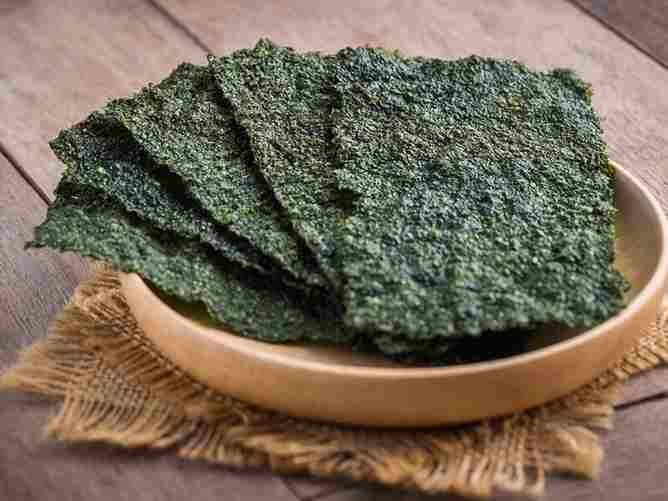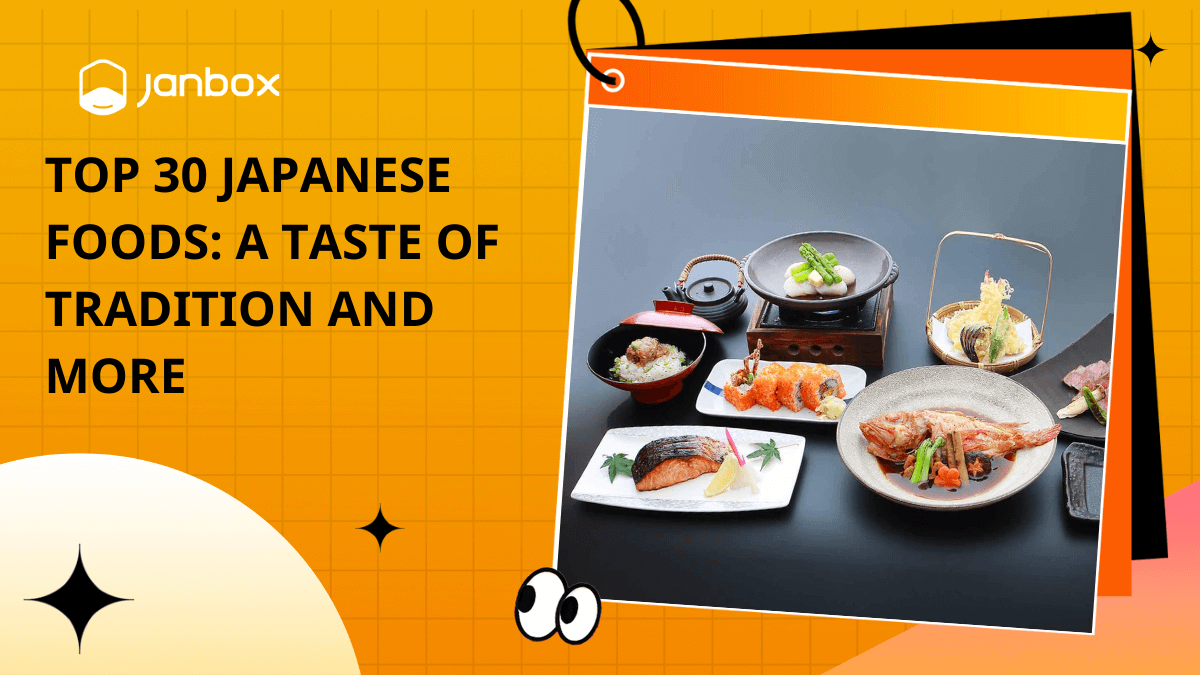Anyone who has been to Japan or who regularly eats Japanese food will know how crucial seaweed is to traditional Japanese cuisine. Seaweed is a versatile and healthy ingredient that can be used in many traditional dishes in Japan. Why is that? In this article, we will discover its health benefits, along with several of the most popular types of Japanese seaweed favored by the locals.
What is special about Japanese seaweed?
Seaweed, also known as sea vegetables in Japan, is a vital source of nutrition for marine life. While this marine alga can be found in many places, Japanese seaweed has become popular around the world thanks to its distinctive flavor and many unforeseen health benefits (which will be explained later in the post). Whether it’s for making dashi broth or wrapping sushi rolls, Japanese seaweeds are an integral part of many classic Japanese dishes.
Most supermarkets throughout the country stock an extensive variety of seaweed-related goods. Even dried seaweed, including nori, can be found in the grocery store. Some restaurants also offer a one-of-a-kind experience by specializing in the preparation of gourmet foods made from seaweed.
However, there are countless numbers of them. Here I’ve compiled 10 of the most common types of edible Japanese seaweed along with descriptions of their key characteristics and frequent usages.
Types of Japanese seaweed
1. Kombu

Types of Japanese seaweed – Kombu
Kombu is used widely in the preparation of dashi broth – a base ingredient in virtually all Japanese cuisine, thanks to its high calcium and iron content and savory umami flavor. It is typically collected from the seas around the island of Hokkaido.
Because of its tough and thick nature, kombu is rarely eaten on its own. When it is, the kombu must be cooked for an extremely long time, pickled, or shaved very thinly to be edible. For instance, Kombucha is a tea made from steeped pieces of dried kombu.
However, unless special measures are taken to make it palatable on its own, it is typically used to enhance the flavor of other foods. Kombu is commonly used in onigiri, a Japanese rice ball, as well as a condiment for steamed rice and a topping for salads and vegetables.
2. Mekabu

Types of Japanese seaweed – Mekabu
If you look at the bottom of a wakame seaweed plant, you’ll see the Mekabu – a ruffled, blossoming sprout. Mekabu is often referred to as the “roots of wakame seaweed.” This type of Japanese seaweed is known differently in regions, such as nekabu, mimi, and mehibi.
Because of its nice, mellow, sweet flavor, mekabu is highly valued in Japan and other Asian countries. It has a wide range of culinary applications, from fresh addition to salads to dried addition to soups like udon, among others. Most of the time, it serves as more of an extra than the main ingredient in a dish. We can also see that Japanese shampoos, soap, and skincare products do sometimes contain mekabu seaweed as an ingredient also.
3. Nori

Types of Japanese seaweed – Nori
It is reasonable to say that Nori seaweed is the most popular type of Japanese seaweed eaten outside of Japan. It’s likely that when you hear the word “seaweed,” your mind immediately goes to Nori, even if you’ve never tried it. This is because Nori is the most widely known variety of Japanese seaweed used in cooking.
Although it is derived from a species of red algae known as pyropia, nori is actually a dark green color. It’s commonly sold in the grocery in sheets that are both thin and crisp. Although it is a type of seaweed, nori has a slightly coarser texture than other types of Japanese seaweed.
When making sushi or onigiri, nori is typically used as a wrapper. In noodle dishes and soups, it serves as a garnish or seasoning agent. To create this, marine algae are dried and pressed into a thin film.
4. Umibudo

Types of Japanese seaweed – Umibudo
Umi budo is another common variety of seaweed in Japan. The name in Japanese means “sea (umi) grapes” (budo). The Japanese dish known as umibudo is also known as green caviar.
Due to its widespread distribution along the Indo-Pacific coast, this edible seaweed has been adopted to varying degrees by numerous cultures such as Philippines and Malaysi.
The bubbles, which are actually the leaf section of the aquatic plant, are the most distinguishing aspect of umibudo. Most umibudo fans would agree that the dish’s velvet smoothness is its greatest strength. Once you put the bubbles in your mouth, they will pop. The Japanese have an onomatopoeic term for this type of texture, “puchi puchi,” which means “small things popping.”
Raw Umi budo, with soy sauce or a mixture of soy sauce, vinegar, and mirin, is popular in Okinawa as a typical restaurant’s side dish. The flavor is mild and slightly salty, just like the ocean. When paired with beers, it is also a perfect match for Japanese drinking bars!
5. Sea Lettuce

Types of Japanese seaweed – Sea Lettuce
Sea lettuce looks like regular green lettuce. The leaves can be either narrow or broad, and there are to be one or many lobes on each leaf. The shapes are often round or oval with wavy edges and numerous holes or perforations. Although it is just about 40 cm (ca. 16 inches) in length, sea lettuce stands out in the ocean due to its vivid green color and high population density.
Fresh, raw sea lettuce can be enjoyed as a salad by itself, in combination with other raw seaweeds, or even with land greens. The flavor of fresh sea lettuce is typically characterized as slightly salty, or similar to sorrel, and its smooth texture often evokes its strong taste. Instead of using it as the main ingredient, try adding it as a flavoring to soups and salads. Ulva, along with other types of green seaweed, is a common edible and healthful topping for miso soup in Japan.
6. Irish Moss

Types of Japanese seaweed – Irish Moss
Irish moss is a species of red algae, which sort of resembles a sea anemone, with long, spindly branches. Electrolyte minerals such as calcium, magnesium, sodium, and potassium are often in Irish moss, thus, it is often used for strengthening hair, skin, and nails. Aside from its impressive, heart-healthy nutrition profile, the blogger says that this weed is mucilaginous (sticky and thick) that can clear out phlegm and help with congestion. Irish moss can be used as a vegan substitute for gelatin because it becomes jelly-like when soaked in the water yet provides the same consistency without animal protein. However, it is recommended to soak the sea moss (after cleaning it) for up to 24 hours before making use of it as gelatin.
7. Dulse

Types of Japanese seaweed – Dulse
Dulse has a distinctive flavor that combines sweet and spicy notes and has a distinctive crimson color. This seaweed comes in whole stringy leaves or powdered form and is either reddish brown or green, loaded in potassium and protein.
Dulse is a good source of many minerals, including iron, magnesium (16%), calcium, potassium, phosphorus, and iodine. Like Nori, it’s a fantastic protein source (much more so than soy!). It has a salty, chewy flavor and a slightly rubbery texture. Soups and salads are delicious ways to get dulse into the game.
>>Read more: Japanese milk for pregnant women.
8. Wakame

Types of Japanese seaweed – Wakame
Wakame’s rising popularity can be attributed to the fact that it is low in calories, increases energy, and facilitates weight loss. Wakame is more vibrant than most other seaweeds, especially when prepared in specific ways, and has a rather smooth texture, so if you saw it out of the corner of your eye, you may mistake it for a leafy green above-ground vegetable. In terms of texture, it’s similar to Kombu but softer and more tender (and not so thick and fibrous that it’s inedible).
Wakame is the dark seaweed that looks like tiny flecks floating in the broth with the silken tofu. It has an unusual softness and a salty, sweet flavor. Wakame works wonderfully in miso soup, summer salads, and as a supplementary vegetable. The sea flavor is still there, but it’s lighter and less overpowering now. This is why Wakame salad, typically topped with sesame seeds is so common.
9. Hijiki

Types of Japanese seaweed – Hijiki
Hijiki is arguably the most visually unique seaweed of those we’ve described so far, and it’s used in a variety of traditional Japanese and Korean recipes. It can be found as long, dark brown strands with a hint of green, or as shorter, stringy pieces that might be mistaken for tea.
The flavor of Hijiki is mildly earthy and nutty. Salads, stir-fries, soups, and rice dishes all benefit from their savory and crunchy taste. It’s also a great base for a quick salad topped with fried tofu and shredded carrots.
10. Arame

Types of Japanese seaweed – Arame
Ise-Shima bay is home to a thriving population of wild Arame seaweed, which is often needed to be picked by locals by hand. You can hardly tell the difference between dried Hijiki and Arame when placed next to each other. You can’t tell that Hijiki is thicker and more spherical than Arame until you soak it. Arame is a little more solid compared to its counterpart.
Whereas hiziki has a more strong seaweed taste, arame has a slightly more balanced flavor. Miso soups, salads, side dishes, and noodle dishes like soba and udon all benefit from the use of arame.
Health benefits
Japanese seaweed is said to be one of the most nutrient-dense foods on the planet. So, what exactly does it do for our bodies? Many studies have demonstrated the following key benefits:
- Iodine, a trace mineral necessary for proper thyroid function, can be found in Japanese seaweeds in relatively high concentrations. Iodine helps the production of these thyroid gland hormones in regulating development, powering our bodies, and repairing our cells by the endocrine system.
- Its high keratin content can help you maintain healthy hair and strong nails. Some other notable health benefits include aiding digestion—reducing gas, and providing relief from inflammatory diseases like rheumatoid arthritis.
- Several antioxidants, including vitamins A, C, and E and other beneficial pigments, can be found in seaweed. Therefore, supplementing your diet with even a small amount of this food can help you get more of the minerals you need.
And many more.
Conclusion
It can be seen that, while each type of Japanese seaweed has unique characteristics and uses, they all provide significant benefits to human health. If you want to buy these foods right from the Japanese locals without putting in too much effort, Janbox is the place to go. To learn more about the Janbox service, click here.
- Website: https://janbox.com.
- Email: support@janbox.com.
- Facebook: https://www.facebook.com/janbox.com.en.
>> Read more: The best 10 places to buy Matcha from Japan.









